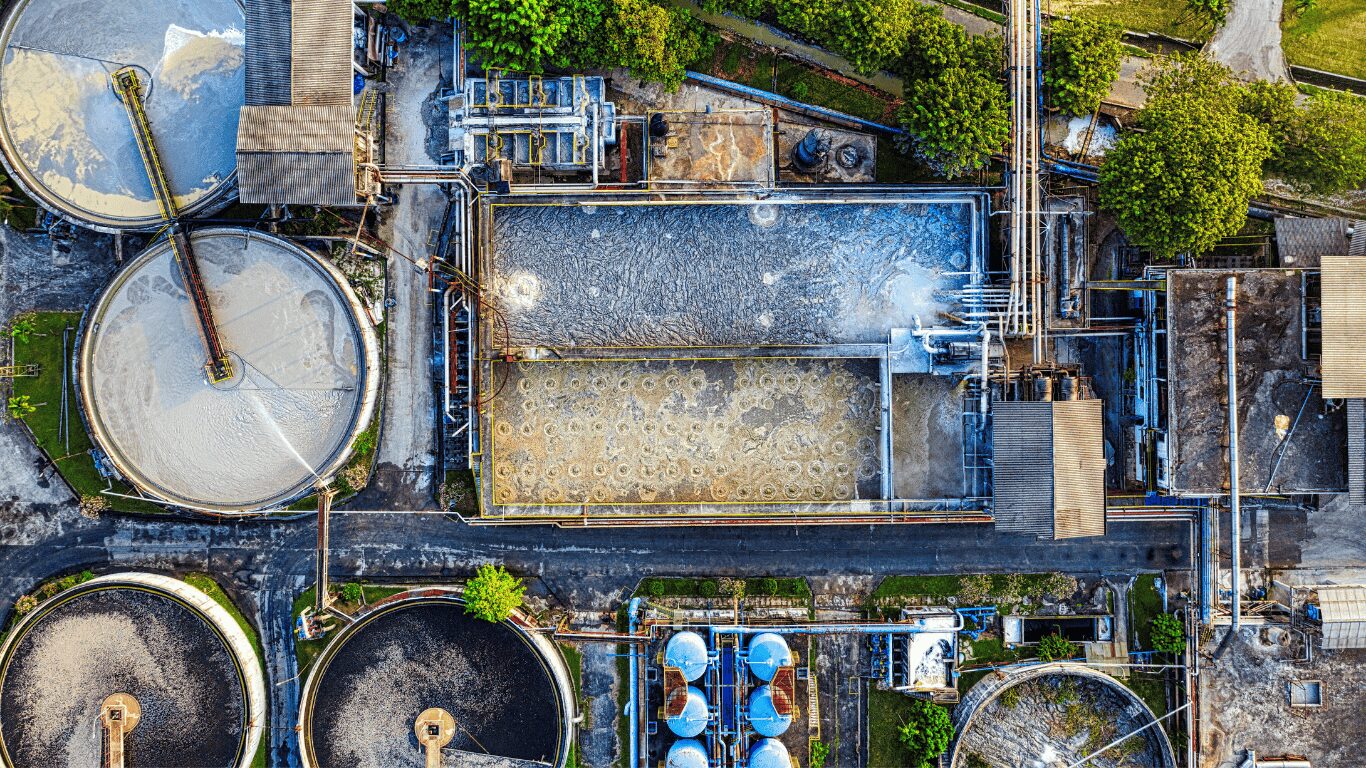Water Risk Assessment: Protecting Your Operations
Dec 28, 2023Water is one of the most critical resources for any business. Yet, many organizations underestimate the risks associated with its use. From fluctuating supply and quality issues to regulatory pressures and reputational concerns, understanding these challenges is key to keeping operations running smoothly.
In this article, we’ll guide you through water risk assessment, what it entails, the tools and strategies you can use, and practical steps your team can take to protect your business, resources, and stakeholders.
What is Water Risk Assessment?
Water risk assessment is the process of identifying, evaluating, and managing risks related to water in your business operations. It goes beyond just checking supply. It covers water quality, regulatory compliance, and potential impacts on your stakeholders and the surrounding environment.
From our experience, teams often catch early issues by looking at both the facility and the broader watershed. Key points to consider:
- Where your water comes from and how reliable it is
- Potential contamination or pollution risks
- Local regulations and compliance requirements
- How water scarcity or excess could affect operations
Types of Water Risks Businesses Face
When it comes to water, businesses face several types of risks that can impact operations, costs, and reputation. Understanding these early can save a lot of headaches down the road:
- Physical risk: Shortages, flooding, droughts, or water stress affecting your supply or production.
- Regulatory risk: Changing environmental laws or water legislation that require compliance.
- Reputational risk: Negative perception from stakeholders if your water practices are poor or unsustainable.
- Business risk: Financial losses linked to disrupted operations, supply chain interruptions, or fines.
Keeping an eye on these helps your team plan proactively and avoid surprises.
Factors Influencing Water Risk
Not all water risks are obvious at first glance. To spot early warning signs, start by examining the key factors that influence your water risks. These include:
- Water quantity: Is your supply consistent, or could shortages occur?
- Baseline water stress: How much pressure exists on local freshwater resources?
- Climate patterns: Changes in rainfall, droughts, or extreme weather.
- Local watershed or river basin: Pollution, upstream usage, or land development.
- Flooding and drought: Physical events that can disrupt operations or supply.
Monitoring these factors gives you a clear picture of where vulnerabilities lie and where action is needed.
Tools and Methods for Assessment
Water risk assessment works best when it’s structured and intentional. We’ve found that teams get the best insights by pairing data with practical, on-site observation. Some useful methods include:
- WWF Water Risk Filter: A free online tool to evaluate water risk in your river basin or supply chain.
- Water footprint analysis: Understand how much water your operations and value chain consume.
- Facility-level monitoring: Track water use, quality, and regulatory compliance.
- Data-driven assessment: Collect and analyze historical water data, weather patterns, and local watershed information.
For a practical example of facility-level risk assessment, see our guide on Legionella Risk Assessment.
Water Risk in the Value Chain
Water risks don’t stop at your facility’s gates. Operators often catch issues early by looking at the entire value chain: from suppliers to downstream partners. Some key points to consider:
- Supplier operations: Are they exposed to water scarcity, flooding, or pollution?
- Water use across the chain: Identify where the most significant consumption or risks occur.
- Stakeholder collaboration: Engage partners to set water-related goals and share best practices.
A structured approach, like creating Water Management Plans, helps ensure your entire value chain mitigates risks and maintains water security.
Mitigation Strategies for Water Risks
Effective water risk mitigation focuses not just on problem avoidance but on long-term strength and sustainability. A well-rounded strategy blends monitoring, planning, and collaboration. Many teams notice early improvements when they take these steps:
- Regular monitoring: Track water quantity, quality, and local watershed conditions.
- Compliance checks: Stay ahead of environmental laws and water legislation.
- Efficiency improvements: Efficiency improvements: Reduce consumption, recycle where possible, and manage water footprint. For practical insights on maintaining water quality and minimizing operational risk, check out our guide on cooling tower water treatment.
- Stakeholder engagement: Collaborate with suppliers, communities, and regulators.
- Emergency planning: Prepare for droughts, floods, or sudden supply disruptions.
Consistently applying these strategies helps mitigate risks, safeguard water security, and support long-term business sustainability.
Benefits of Conducting Water Risk Assessment
When you take water risk assessment seriously, the results show across your operations. Companies that track and manage risks early tend to achieve stronger performance, lower costs, and better stakeholder trust. Key benefits include:
- Risk reduction: Avoid operational disruptions caused by shortages, flooding, or contamination.
- Cost savings: Efficient water use lowers utility bills and potential fines.
- Regulatory compliance: Stay ahead of environmental laws and reporting requirements.
- Reputational protection: Demonstrate responsibility to stakeholders and the community.
- Future readiness: Prepare for climate change, water scarcity, and evolving supply challenges.
How Climate Change Amplifies Water Risks
With climate change reshaping water patterns, once-manageable risks can escalate quickly. Staying proactive through monitoring and planning helps teams respond effectively. Key impacts include:
- Droughts: Reduced freshwater availability for operations and communities.
- Flooding: Damage to facilities, infrastructure, and supply chains.
- Changing rainfall patterns: Affect water quantity, quality, and predictability.
- Water scarcity: Heightened competition for limited resources, increasing business risk.
Understanding these trends allows your team to build resilience and maintain water security across all operations.
How Water Risk Assessment Impacts Operations and Costs
Water risks have a direct impact on operations, finances, and long-term water security. Teams that assess these risks systematically tend to prevent bigger problems down the line. A thorough water risk assessment helps them to:
- Map their water supply and local watershed
- Identify hotspots for potential contamination
- Track usage across operations and the value chain
- Implement efficiency measures and stakeholder coordination
The result? Fewer operational disruptions, lower costs, and stronger water security. Observing these cause-and-effect relationships helps your team act proactively, rather than reacting when problems arise.
Integrating Water Risk Assessment Into Your Business Strategy
Think of water risk assessment as an ongoing process, not a single project. When it’s built into your business strategy, it helps teams spot issues early and make smarter, data-driven choices. Start by:
- Setting water-related goals for your operations and value chain
- Monitoring water use, quality, and local watershed conditions regularly
- Engaging stakeholders, suppliers, and communities to ensure compliance and collaboration
- Reporting findings and progress to leadership and investors
When done consistently, your organization strengthens operations, protects resources, and mitigates risks. Need a clearer view of your water risks? Let’s work together to identify vulnerabilities, improve efficiency, and ensure your operations stay resilient in the face of water challenges.
Frequently Asked Questions (FAQs)
What factors are considered in water risk assessment?
Factors include water quantity, quality, local watershed conditions, climate patterns, pollution, and regulatory compliance.
How does water scarcity affect businesses?
Limited freshwater resources can disrupt operations, increase costs, and heighten business and reputational risks.
What tools help organizations assess water risk?
Free online tools like the WWF Water Risk Filter, water footprint analysis, and facility-level monitoring provide valuable data.
How can companies mitigate water risks in their value chain?
By engaging suppliers, setting water-related goals, improving efficiency, and monitoring compliance with environmental laws.
Why is water stewardship important for future operations?
It safeguards water availability, ensures sustainable use, supports regulatory compliance, and strengthens relationships with communities and stakeholders.


